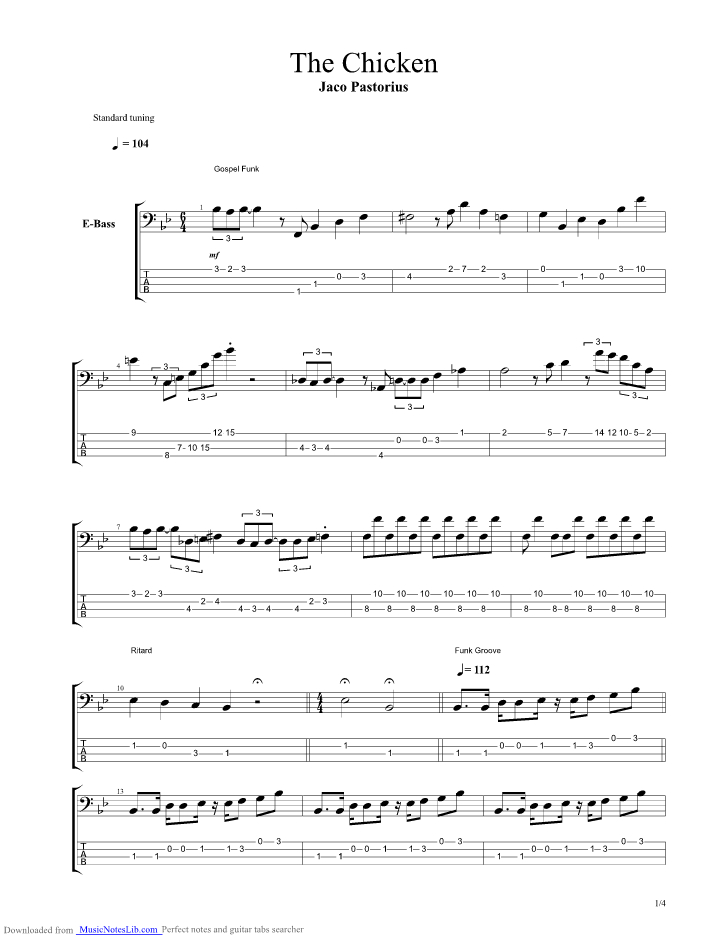
If you’ve spent time working on the arpeggio shapes we’ve covered before, this shouldn’t cause any real concern, but if you’re not yet comfortable, go back and check out the previously mentioned lesson. Over the Eb7, D7, and G7 chords, we’re just playing notes taken from the arpeggios. Sometimes it’s important to remember that even with everything we learn, the best thing can often be to just play the minor pentatonic scale with a good blues feel. The first four measures contain nothing but simple minor pentatonic and blues scale phrasing which sounds great on a track like this. 2), I’ve written something very simple that focuses on the minor pentatonic scale. If you take a look at the first solo ( Fig. Now let’s look at how we can tackle that melodically.

I know that’s a lot to take in, so before you move on, just take a minute to play through these chords. We end the form by moving back to Bb7 for four measures. In measure 12 we have a break where normally the band plays a descending unison melody, but in our example we’ll just play a blues fill. There’s no need to panic though, as that’s just a simple cycle we looked at in a previous lesson. Then we jump down a fifth to G7 and up a fourth to C9. In measure 7, we take a turn beyond blues and move down a half-step to D9 instead of back to the I chord. Arpeggios, minor pentatonic scales, Mixolydian mode, and using the Super Locrian scale to resolve to the IV chord-these all have a place. This means you can treat this section like any other blues, and everything we’ve covered so far will work great here¬. The first six measures are identical to a standard blues, as we’re playing the I chord for four measures (Bb7) and moving to the IV chord in measures 5 and 6 (Eb9). Hopefully as the tune starts out, you’ll feel like you’re in familiar territory. 1 and then we’ll break it down into manageable chunks. Now, let’s take a look at the chord chart in Fig. A piece that incorporates a new melody over an old chord progression is known as a “contrafact” (check out a list of contrafacts here). We’re not going to learn the melody here, but instead follow the jazz practice of borrowing a chord progression and using it as the basis for a new tune. It’s also a favorite of Guthrie Govan’s fusion group, The Fellowship, which I’ve seen played a lot, and there’s a cracking version recorded by the criminally unknown Shaun Baxter called “Chicken Soup,” which can be heard on his seminal album, Jazz Metal. There are endless renditions of this fantastic tune to check out, including the classic version recorded by Jaco on The Birthday Concert, along with various YouTube versions from the likes of John Scofield and Mike Stern. Originally composed by saxophonist Alfred “Pee Wee” Ellis, “The Chicken” would go on to be a funky fusion standard often played by the late, great Jaco Pastorius. So far in this column we’ve focused on the dominant 7 chord and various ways to outline it, so now I’m going to introduce you to an easy chord progression that you’ll be able to work up pretty quickly with some other musicians. This month we’re going to take it easy and let you use what you’ve already learned while working on another key concept for jamming musicians. We’ve covered scales, arpeggios, and phrasing to take your playing beyond the blues you may know and love.
The chicken jaco chords series#
This series of columns was always conceived as a conduit for techniques and concepts that let you push past the old 12-bar form you’ve heard at oh-so-many jam nights in bars and clubs.įor the last few lessons we’ve looked at note choice and how we can use music theory to expand our practice methodology.
The chicken jaco chords pdf#
The chicken jaco chords how to#


One for rhythm playing, the other for lead. This arrangement features two backing tracks. “The Chicken” is a Jazz-Funk based groove with a catchy melody and a great bass line. Below is the lesson for “The Chicken” by Jaco Pastorius.


 0 kommentar(er)
0 kommentar(er)
